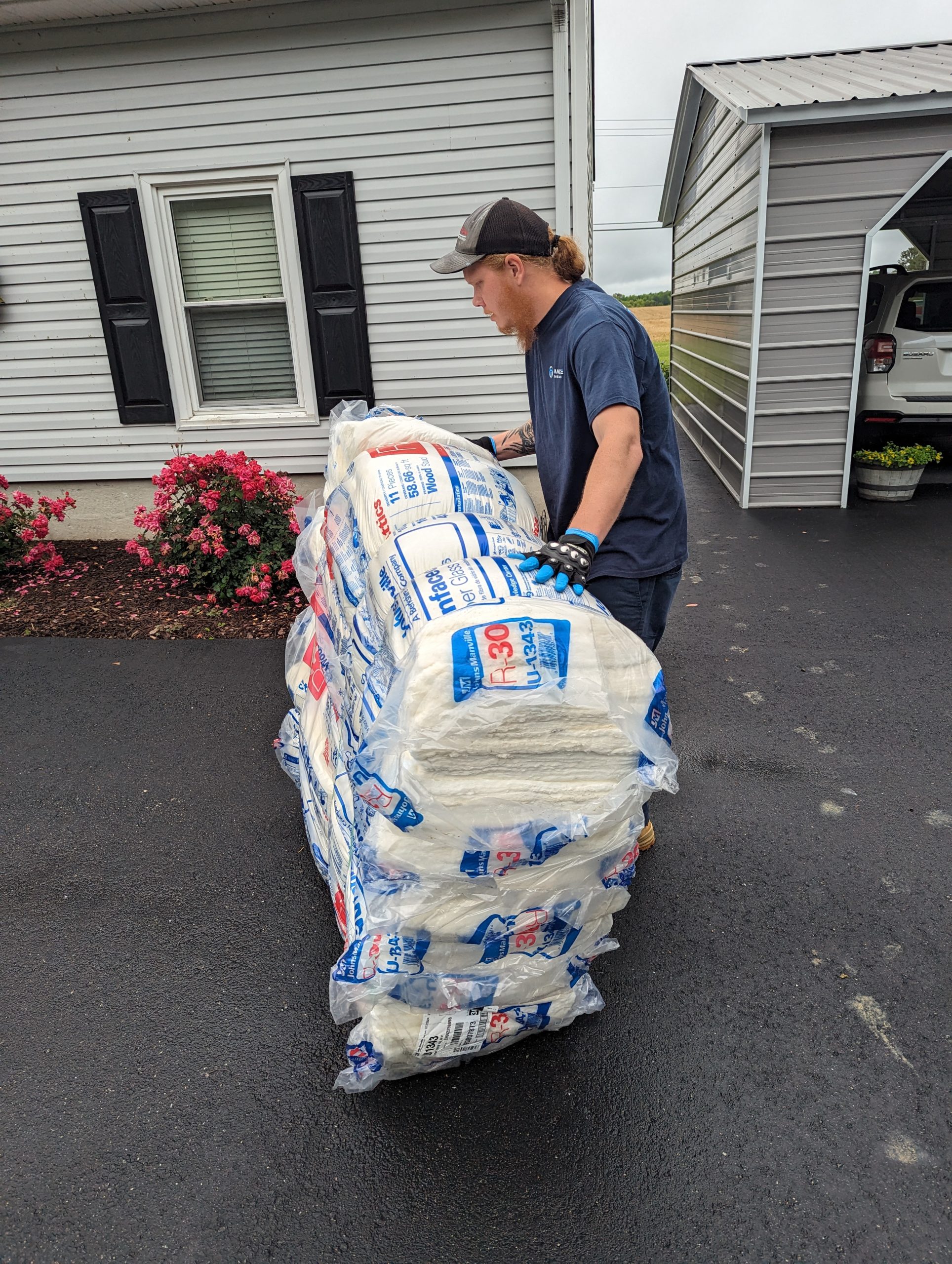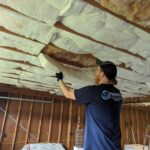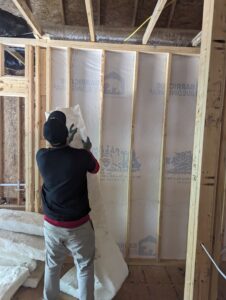What is the Difference Between Faced & Unfaced Insulation?
It probably goes without saying that insulation is a key factor in preserving and protecting your most valuable asset. As you plan your home addition or remodel, insulation is an important factor to consider. Not only does it create a more energy efficient space, but it also protects from mold growth and makes life overall more comfortable.

There are many types of insulation, but for many new construction and retrofit jobs, you are choosing between faced and unfaced insulation. While serving similar purposes, it will help you make an informed decision for your needs when you understand the key differences between Faced and Unfaced batt insulation.
What is Faced Insulation?
Faced insulation – or kraft-faced insulation is wrapped in a vapor barrier, which consists of either a paper or foil face. This face helps to control moisture within the cavity of the wall and it can reflect heat back into the living space more efficiently than without the vapor barrier.
There are several advantages to faced insulation for your home. If you live in humid climates such as Virginia, controlling the moisture that enters your home is paramount to avoid structural damage and mold. The vapor barrier can help prevent this buildup of moisture.
Another advantage of faced insulation is that it is typically easier to install. It has a service area called tabs that can be stapled and secured and provides a smoother surface for drywall to be applied over the top.
Installing faced insulation correctly is important. If it isn’t handled correctly, you will run the risk of trapping the very moisture you are trying to keep out which can lead to unintended issues.
One disadvantage to Kraft-Faced Insulation is it’s cost, which is slightly higher than unfaced insulation. However, it can be the best value for your dollar in specific situations.
What is Un-faced Insulation
Unfaced insulation is simply rolls of fiberglass which fits into the wall cavities between studs. It is commonly used on inside walls of the home, in attics, where there is typically better air ventilation.
There are advantages to unfaced batt insulation. It is generally less expensive than faced insulation while still an effective solution to create the desired goal of energy efficiency. Unfaced insulation can be used in a variety of areas of your home, including attics, walls and floors. Its breathability allows moisture to escape easily, making it much more difficult for mold to survive.

Installation tips
While it is possible to make this a DIY installation, professional insulation from a qualified, licensed installer ensures optimal results and energy savings. Mistakes installing your insulation may not only lead to inadequate results, it can lead to costly repairs later on.

As you install insulation, be sure to perform air sealing treatments to prevent air leaks. Air leaks significantly and negatively impact the efficiency of the insulation. You may also consider continuous insulation, which means to insular the entire wall or roof to maximize savings on your energy bill.
Install any insulation with care, always handle with gloves, google, and a mask to avoid skin irritation and inhalation of dangerous glass particles. Also, avoid installing insulation to tightly as it can restrict ventilation and increase moisture buildup.
Seek Help From the Professionals
Knowing which insulation type is right for your home may be a tough decision, that’s why we at Vance Insulation are ready to help. With over 60 years of experience and a family-owned local company, Vance Insulation knows the Virginia climate and has helped 10’s of thousands of customers from Williamsburg to Richmond to insulate their home. Call us if you have any questions about which insulation is best for your home.

